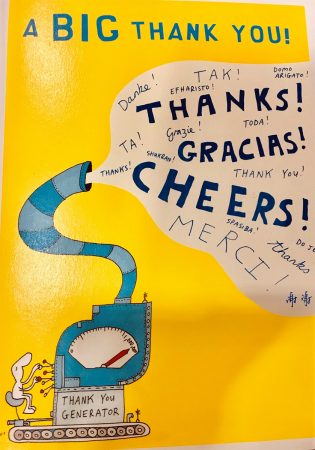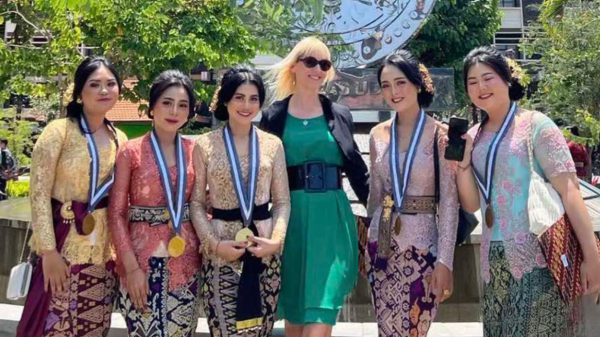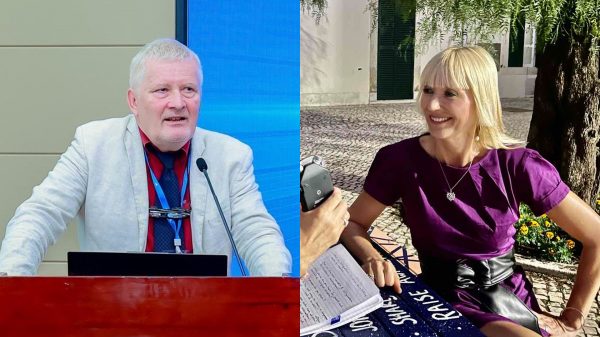
23.03.22
The role of teachers working with multilingual communities of learners: A reflection of a bilingual teacher
By Josefina Aliaga Garcia
In preparation for the International Day of Multilingualism, 27.3.2022. I would like to encourage all educators and parents to read this inspiring blog and plan to mark this important date with engaging Healthy Linguistic Diet activities for children and adults.
Wishing you all a productive International Day of Multilingualism, 2022.
Dina Mehmedbegovic-Smith
Think of the following situation: You are a primary teacher at the beginning of the school year. You are told that you will be teaching in 1st grade, and 30 percent of your class do not speak English as their first language. Instead, they speak a variety of languages you do not know, and some students know almost nothing about English, because they have recently arrived from other countries.
Well, in an increasingly globalised world, this scenario may be more and more recurrent every year, in which multilingual learners will be the rule rather than an exception.
If I had been that teacher just a few weeks ago, I would have panicked thinking in questions such as: How am I supposed to teach those children? How am I going to communicate with them, if I do not speak their languages?! Am I really capable to support those children properly?
I am a Chilean Primary Teacher with a specialisation in language arts, a Spanish Teacher for native speakers. I have worked as a 1st-grade teacher for three years and as a language teacher in higher grades. Currently, I am living in London while studying for an Educational Leadership MA at the IOE (UCL). A few weeks ago, in a Literacy Development lecture, which is my optional module, I had the opportunity to meet Dina Mehmedbegovic-Smith. That session was a turning point in my way of seeing and understanding multilingualism. The first thing Dina asked us if we considered ourselves to be bilingual and to provide a personal definition of bilingualism – what being bilingual meant to us, what was our understanding of it. That question made me reflect on my own experience: Am I a bilingual person? And surprisingly, the answer was that although I speak Spanish and English, with the latter as a second language, I did not feel bilingual. Therefore, my first reflection was that bilingualism or multilingualism is, among other things, a matter of identity and confidence that goes beyond being a user of certain communicative skills in different languages or a certain level of proficiency. Instead, it has an emotional dimension that we should not ignore, especially if we are teachers. Emotions are twofold: on the one hand, they can promote meaningful learning; on the other, they can inhibit it. They can be powerful allies or enemies of us – teachers.
As many of us know, our identity and emotions are shaped by our experiences. Within these experiences, school events are certainly important ones. Multilingual students soon perceive if their home languages are, implicitly or explicitly, accepted, acknowledged, or rejected in their school environment. These perceptions can open the door for deepening their learning in their home languages (and with this, develop their identity) or limit their use, even to the point of not wanting to speak their home language and hide it. School communities are not immune to the power of language hierarchies, and therefore, we must be aware of them. Thus, an important advice is: to acknowledge and value your students’ languages as your starting point. This is the starting point your learners will require in order to build the confidence needed to self-identify as a bilingual.

Our duty as teachers is to support our multilingual students, even if we do not speak their languages. It is logical to think that we are more likely to provide better support to our students, if we speak their languages. And that may be true. But it does not mean we cannot (or should not) do anything for the learners whose languages are not familiar to us.
There are multiple strategies and here are some ideas. First, as stated, we should value the language diversity already present in our classrooms. By valuing I mean: Find out what languages your students use. Ask them to teach everybody greetings in their languages and use those greetings on different days. Make sure that you have bilingual or multilingual pictures, dictionaries and other types of reference books in languages your learners use. Give positive messages to children by encouraging them to use the bilingual resources available and to bring their own bilingual dictionaries and books. Even for very young children, the presence and active use of bi- or multilingual books is an enriching experience as it helps develop HLD habits and improve their linguistic self-esteem. Create a multilingual word bank for different topics in the curriculum. A bank like this can be used and further developed over many years. Parents and other staff members may also be able to help. Display and refer to key words and phrases, metaphors etc. in different target languages at the beginning of each new unit/topic. Encourage the use of media in other languages for all children. For example, when studying literature use film versions of the relevant stories or novels with subtitles.
Second, we can look for help in our surroundings: ask other colleagues if they speak some of your students’ languages and request some advice. If you cannot find any, look for family members who can help or students, who can become peer mentors or language ambassadors. Occasionally, especially in deprived contexts, parents and families do not know how to support their children with school, but that does not mean they do not want to do it. In most cases, they want to help, but they do not know how.
We can show them how. A golden rule may be to build a partnership with our students’ families to support the development of their home languages. Books in two languages, films, creative writing tasks such as life diaries or traditional recipes…all these are activities we can promote and ask for them to be developed at home. We can even go further by asking our students to share with the classroom their learning to reinforce their identities. For example, by organising a cultural fair with different types of food or storytelling about other countries’ traditional stories. It sounds pretty fun, does it not? In the process, we are implicitly teaching to our whole classroom values such as equality, respect, inclusion, multicultural awareness and so forth. In other words, you are promoting a Healthy Linguistic Diet.
The benefits of multilingualism are not only in terms of emotions, self-esteem, and identities, but also in terms of cognitive development. Some researchers have found gains related to bilingualism in improved abstract thinking, brain development and better performance in many areas of the curriculum. Therefore, it sounds that supporting our students to develop more than one language is a worthwhile investment.
So, the next time you are in a situation as the one presented in the first part of this blog, do not panic! You do not necessarily need to speak more than one language to support multilingual students properly. Of course, it is not a straightforward path. But your main ingredients are empathy and love. Put yourself in your students’ shoes, give them the confidence they need, and rock your multilingual classroom!

